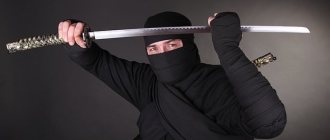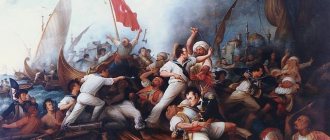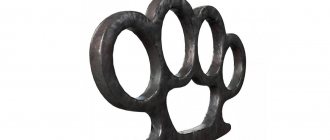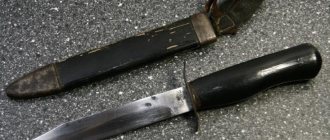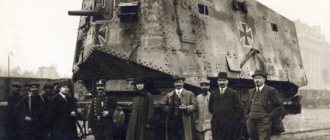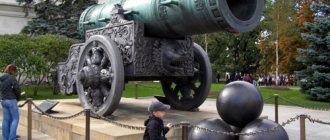Scout knives, quite well-known and widely used during the Great Patriotic War, were further developed in more modern modifications. Already in the 70s, the first shooting knife appeared, and the HP-40 is considered its ancestor. It was and is an indispensable assistant for special forces of the army and certain special services.
The progenitor of the NRS is the HP-40 knife.
History of appearance
Naturally, the NRS-2 was not the first shooting knife developed in the USSR. At a minimum, there should have been an NRS-1 knife. The first modification of the shooting knife was developed in the 70s of the twentieth century. The creation of such an original development was entrusted to the talented engineer Rafail Khlynin.
NRS-1 was designed for the SP-3 cartridge of 7.62 mm caliber. This cartridge had a special design and was silent. It was developed back in the 60s, specifically by order of the KGB of the USSR. The cartridge had a 1943 model automatic bullet, but that was where its similarity to the standard cartridge ended. An original telescopic piston was placed in the cartridge, between the bullet and gunpowder. During the shot, this piston transferred energy to the bullet, but at the same time completely cut off the powder gases, and the shot was silent and without flash.
It is clear that such cartridges were incredibly expensive to produce, but the shooting knife is not a machine gun, and it was necessary to shoot from it only in the most extreme cases.
In 1983, the latest silent complex was adopted, including the PSS pistol (special self-loading pistol). The pistol was chambered for the SP-4 cartridge. The new silent ammunition significantly exceeded the SP-3 cartridge in its parameters, so the question of creating a new model of a shooting knife became urgent. It was called NRS-2.
Emergence
One of the legendary models of military short-bladed edged weapons of the Soviet Army is the scout knife HP40/NA40.
Its history began back in the 30s of the 20th century. At this time, the USSR tightened responsibility for owning edged weapons, and Finnish knives were also banned. In 1935, based on the hunting knife of Puntus Holmberg, the famous NKVD knife was created, which was issued as clothing allowance to operational workers. But ordinary soldiers of the Red Army were armed only with a bayonet from a Mosin rifle, which was quite effective in combination with a rifle. But inconvenient in short hand-to-hand combat, and even more so for household activities. This problem manifested itself in all its glory during the Soviet-Finnish war, where Finnish intelligence officers effectively used puukko knives in combat operations. Which were equally suitable for removing sentries, for short hand-to-hand combat, and for preparing food or repairing equipment.
Therefore, the leadership of the Red Army decided to develop a combat knife designed to arm soldiers. Two knives were nominated for the competition:
Finnish bayonet model 1919, created by knife designer Akseli Gallen-Kallela. The knife had a straight blade, an S-shaped guard, and a saber handle. Produced by Fiskars.
Finnish scout knife - by and large it was a classic puukko, equipped with a developed double-sided or single-sided finger rest. It must be said that scout knives were not in service with the Finnish army, but were often purchased by military personnel at their own expense. Red Army soldiers learned from their own experience the effectiveness of their use in combat.
On the basis of these knives, the ways of compiling elements, HP40 was created - GRAU index NA40 - 6X6, HP40 - 6X7. Sometimes the name “landing knife” is found. The issuance of a knife to a Red Army soldier was formalized by entering it in a book, as well as a firearm.
At the same time, techniques for working with a knife in combat conditions were developed. The developers were V.P. Volkov0 in 1940. By 1941, techniques for using a knife to defeat an enemy were included in the “Guide to Preparation for Hand-to-Hand Combat of the Red Army.” This system was further developed in the works of N.N. Simkin. and was published in 1944 in the book Close Combat.
Characteristics of a scout knife
Total length of the knife - 263 mm
Blade length - 152 mm
Butt thickness - 2.6 mm
Blade material: U7 steel
Handle material: wood
To make the blade, inexpensive tool carbon steel U7 was used. Its composition contains 0.75% carbon, which provides strength and cutting to the knife, and 0.2% chromium, which is frankly not enough for protection against corrosion. The steel was hardened softly enough so that the blade would spring and bend rather than break under extreme loads. Which are more than likely in front conditions.
The long and narrow blade was formed by high flat slopes ½ the width of the blade. To improve penetrating abilities, the knife was made with a pronounced pike. The developed S-shaped guard reliably protected the fingers from cuts during the most severe injection. The shape of the guard is designed to inject from top to bottom, with the cutting edge facing you. In the 40s this was considered more effective.
The handle was made of straight-layer birch. Blade mounting is classic, through, on a rivet. The blade's tang runs through the entire handle and is riveted, forming a monolithic structure capable of bearing heavy loads. The handle was usually painted black to improve camouflage properties.
According to the Charter, wearing a knife was recommended on the waist belt on the left side, with the handle directed to the right at an angle of 30%.
Production of HP40 was established at the Trud plant in the city of Vacha, as well as at the Zlatoust Tool Plant Plant No. 259. The majority of scout knives were produced in Zlatoust. The Trud plant specialized in the production of NKVD fincas.
The knife was produced in large quantities, as required by the needs of the army. So in 1942, 261,000 pieces were produced, in 19432 - 388,800 pieces. In addition, scout knives were produced by small artels. The overall quality of these knives was noticeably worse.
Features of the first model of the NRS knife
You can distinguish the NRS knife from the NRS-2 by several characteristics:
- These models use different cartridges. For NRS it is SP-3, for NRS-2 it is SP-4;
- The NRS-2 blade is much more convenient for knife fighting, or more precisely, for delivering powerful stabbing blows. After all, intelligence officers and special forces are not taught knife fighting in the sporting sense. The task of a fighter with a knife is to quickly and silently remove a sentry or other target, and in open combat they fight with knives only in Hollywood action films; professional military personnel have more modern weapons;
- The first model of the shooting knife has a plastic front sight;
- The LDC does not have a screwdriver at the end of the scabbard.
The creators of the new model of a shooting knife were famous engineers of the Tula Arms Plant: Ovchinnikov, Shedlos and Savishchev.
The fragile plastic front sight was replaced with a metal one. The mechanism inside the handle had to be remade for the SP-4 cartridge. Special holes have appeared on the scabbard, with which you can crimp detonator caps. Apparently, the military decided to adapt this knife to the needs of saboteurs and spies.
What was the scout knife used for?
The development of a special knife for the scout began in accordance with the order of the Ministry of Defense. The designers tried hard, and the NRS “Scout Shooting Knife” was born.
The version of the blade turned out to be a completely ordinary combat weapon. But in reality, it has become a combined weapon for silently eliminating the enemy.
The management, seeing all the possibilities of a seemingly ordinary blade, immediately classified the development. And there were more stories about him than there were specific characteristics.
LDC equipment
Its appearance did not give away its dual purpose. There are legends that it was later demonstrated to foreigners, and none of them realized its dual purpose. The Tula masters did their best; he could perfectly neutralize the enemy in close combat, and, if necessary, at a distance.
The NRS knife is disassembled (the “barrel” with the cartridge is visible).
The knife-pistol was loaded with a silent SP-3 cartridge, specially designed for pistols with a “silent” shot. The use of a knife as a working tool was not limited in any way. It easily cut rope, slings or cords; the saw on the butt closer to the handle played a huge role in these qualities.
The knife has a device for cutting wire, it is possible to saw small steel rods, cut various wires and even live wires, use it as a screwdriver, etc. The blade turned out to have a fairly wide spectrum of action.
LDC knife design
NRS knife
There was a firing device in the handle of the knife; it was single-shot.
It contained: a removable barrel 6 cm long with a chamber, which had a firing mechanism with a safety lock and a trigger button.
To reload, you had to remove the barrel and insert a new cartridge. Then he returned to his original place and the weapon was ready to fire.
Features of the NRS-2 device
NRS-2 is a knife with a firing device built into the handle. Naturally, it is designed to fire just one shot. The firing device consists of:
- Detachable barrel. It has a locking device at the end and two locking protrusions;
- USM mechanism;
- Boxes;
- Release and cocking levers;
- Flag type fuse.
To better imagine the design of the NRS-2 knife, look at the photo and read the explanations below it.
- A is a blade;
- B is the handle along with the firing device;
- C is a multifunctional sheath.
Now let's look at what the numbers in the photo mean:
- Barrel of the firing device;
- Lever for cocking;
- The trigger, or rather the lever;
- Safety lock, which is very rare for such shooting models;
- Contactor;
- Wire cutters on sheath;
- Lever of cutters;
- Cutter lever latch;
- Screwdriver with wire cutters. This is, of course, wonderful, but I can’t imagine what can be unscrewed with a screwdriver of this type. Although such a screwdriver is better than none;
- Metal front sight.
Complete set of knife NRS-2
- Special insert in the handle. It was inserted instead of a shooting device if it was planned to throw this knife;
- Pouch for four cartridges. At first glance it seems that this is not enough, but in practice, the matter was limited to only one shot, if it came to that at all. Still, this is more of a weapon of last chance than an offensive one;
- Special case for accessories and spare parts.
Comparison of performance characteristics of models NRS and NRS-2
In order to be convinced of the superiority of the NRS-2 model, it is enough to compare the tactical and technical characteristics of the two models. The most important difference is the use of SP-4 cartridges instead of SP-3 in the NRS-2 knife. They have the same caliber, 7.62 mm, but the power of the SP-4 cartridge is much higher. If the initial bullet speed of the NRS model is about 140 meters per second, then the NRS-2 model has a bullet exit speed of 200 m/s. This is only 20 m/s less than the Makarov pistol.
The weight of the NRS-2 including the sheath is 570 grams, which is 30 grams more than the NRS model. The blade length of the NRS-2 is 2 mm longer and is equal to 160 mm. The remaining parameters for the two models are the same:
- Blade width 28 mm;
- The thickness of the blade at the butt is 3.4 mm;
- The firing range is 25 meters, although this is only in theory, try to hit a target at that distance with this thing;
- The rate of fire is approximately two shots per minute.
It is believed that the NRS and NRS-2 are compact auxiliary weapons for attack and defense in close combat. Due to the combination of the functions of bladed weapons and firearms, an enemy with a regular knife has practically no chance, but this is only in theory. All the same, no one will challenge a special forces soldier to a knife duel, but will try to get his knife unnoticed.
In turn, a special forces soldier or intelligence officer will try to prevent getting close to a potential enemy, and will destroy him at a long distance, using the same machine gun. So I seriously doubt the real combat effectiveness of this model. But as a last chance knife with several additional functions for a saboteur, this blade will do an excellent job.
By the way, we can applaud our military industry, since no one abroad has yet made a similar design that surpasses the NRS-2 in its parameters.
Development trends of modern tactical and combat knives in Russia
The development vector of modern knife manufacturers is aimed at:
- Multi-purpose knife.
- Unification of production with knives of other types;
- Maximum simplification and cost reduction of production.
Proof is the appearance and widespread use of the skeleton handle or simply wrapping a cord around the handle.
Piercing blows have lost their effectiveness due to the widespread use of body armor. Cutting weapons came to the fore, with enhanced combat qualities. This reorientation required:
- a change in the shape of the blade, sharp angles and bevels appeared, the purpose of which is to separate the edges of the wound;
- increasing the width of the blade, this is required by unification with a survival knife, multifunctionality of the tool;
- reducing the size of the cross to a minimum, the knife is no longer intended for stabbing, and the finger rest is not needed.
Below are some modern combat and tactical knives:
- "Lynx". Zlatoust craftsmen made this beautiful knife by order of the Moscow SOBR. The knife is available in several versions, in addition to combat. This is a civilian version and a reward one. The blade is dagger type, with one and a half sharpening. The crosspiece is small, the pommel is made of metal, the handle is made of leather, less often a solid one made of hardwood. Award weapons use gilding of the metal parts of the knife. The civilian version has a weakened blade and a different handle, with a smaller crosspiece.
- DV-1 and DV-2. Ordered by special forces from the Far East, the models differ only in the length of the spear-shaped blade and are designed for heavy loads. Butt with sharpening, guard and pommel made of metal. Thanks to the anti-reflective special coating, steel parts do not rust. The handle is oval, made of walnut. The sheath is made of genuine leather.
- "Chastener". released these tactical knives for special forces of the Russian FSB. Two types with the names “VZMAKH-1” and “Maestro” differ only in the location of the serrated (wavy or sawtooth) sharpening. The handle can be made of leather, rubber or plastic. The processing of the blade also allows for differences. The sapper "VZMAKH-3" additionally has: a strap cutter, a saw for metal and wood, pliers with wire cutters, a ruler, three screwdrivers, a nail puller, an awl, and a device for removing insulation.
- Combat knives "Vityaz". The president of the Vityaz BKB S.I. Lysyuk himself ordered them for special forces. The sample turned out to have a heavy blade and a comfortable handle. Ergonomics allow the use of a reverse grip.
- "Antiterror". The leaf-shaped blade was created for the FSB special forces. Butt with serrated sharpening. The grippy handle will not allow your hand to slip. “Katran”, “Shaitan”, “Akela”, “Smersh-5”, “Gyurza”, “Cobra” - this is not a complete list of knives left without description, recently created for special forces units of various subordination in Russia. All of them have excellent characteristics and can make it easier, or even save the life of their owner.


